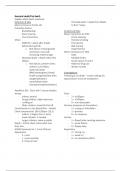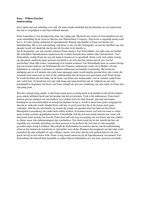Summary
Summary PAEDIATRICS MLA MAPPING - for Medical Exams and Finals
- Module
- Medicine (MLA)
- Institution
- The University Of Manchester (UOM)
One page summaries for topics listed in the MLA Topic Map associated with paediatrics Contents include: Developmental Delay; Whooping Cough; Otitis Media; UTI; Vomiting; etc. All MLA topics are covered within my shop - see other documents for more Each topic covers approx. one page for a succinc...
[Show more]




